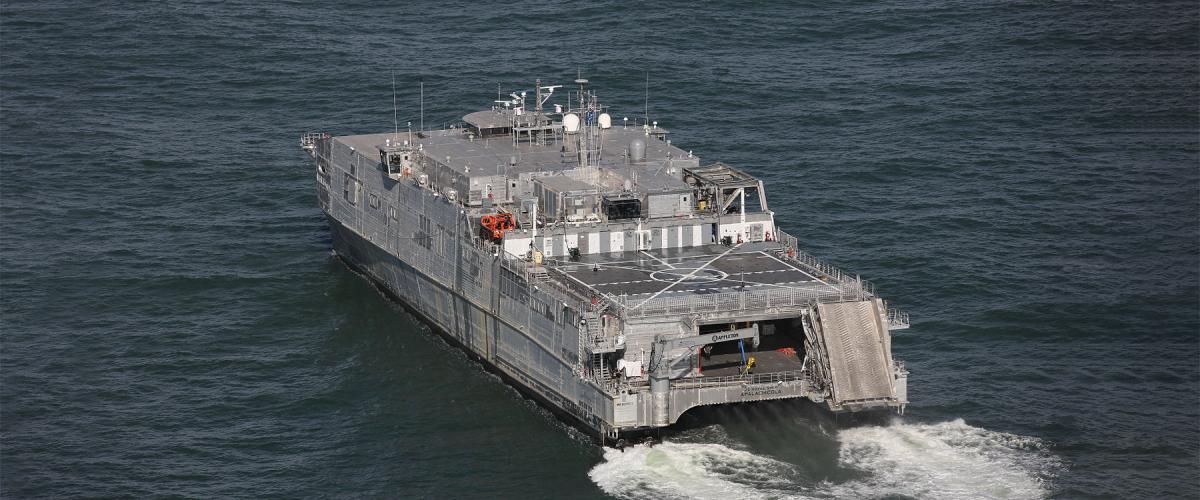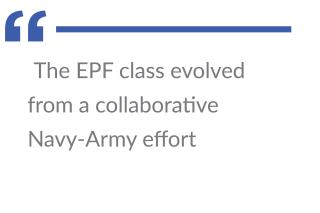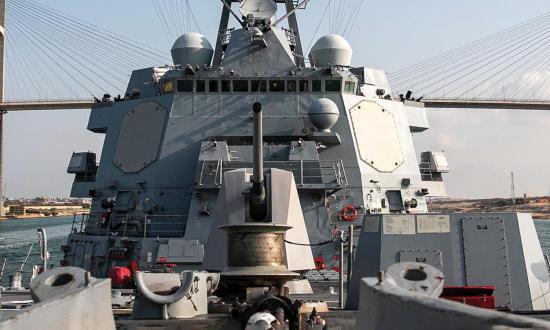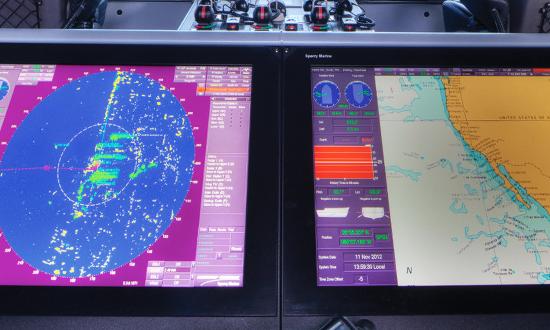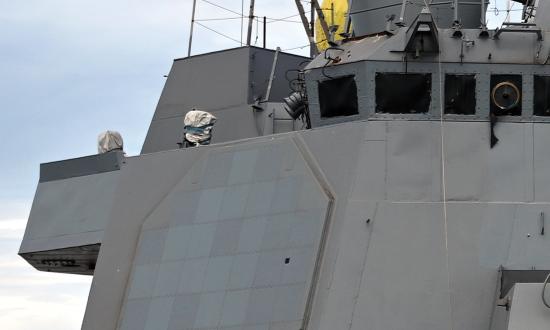Austal USA is activating systems and working on final outfitting of the Navy’s newest expeditionary fast transport, the Cody (EPF-14), following the ship’s launch in late March. Sea trials are planned for later this year.
A key component of the EPF program recently is the ships’ potential for autonomous operations. In February, the company delivered the USNS Apalachi-cola (EPF-13), calling it an “autonomous prototype” and adding that the ship “is the largest surface ship in the U.S. Navy fleet with autonomous capability.” Navy officials say the service is exploring how much autonomy for the class is desirable.
Austal teammate L3Harris’s ASView is the ship’s “perception and autonomy control suite,” which allows operation with minimal or even no crew. During sea trials in summer 2022, ASView controlled the Apalachicola during some 120 hours of autonomous operations, conducted in compliance with the International Regulations for the Prevention of Collisions at Sea. ASView also was integrated with the Applied Physical Sciences wave-measuring system, FutureWaves. The EPF’s machinery control system centralizes control from the bridge, allowing manning reduction on all the ships in the class.
Austal says that “with a shallow draft and high speed, the EPF’s agility provides a positional advantage in the littorals and makes it an ideal candidate to prototype large-vessel autonomous operations.”
Austal has built all 14 EPFs at its Mobile, Alabama, yard. The Cody is the first of the Flight II ships, which will be fitted out to provide medical care, including basic secondary health care, primary surgery, ward beds, limited X-ray and laboratory facilities, and dental support. The ship’s catamaran design permits the stability needed for delicate surgical procedures even while underway.
The EPF class evolved from a collaborative Navy-Army effort—the Joint High-Speed Vessel (JHSV)—starting around 2004. Each service was to own some of the ships, with the Navy’s Strategic and Theater Sealift Program Office responsible for building them.
From 2001 to 2005, the Army-Navy team leased the high-speed transport ship Joint Venture (HSV-X1), built by Australian shipbuilder Incat, to evaluate the feasibility of the design for combat operations. The Joint Venture was used during Operation Enduring Freedom in 2003.
In 2008, the Navy awarded Austal USA a contract to build one JHSV, with options for nine more. In January 2010, the Navy exercised the options for JHSV-2 and JHSV-3. Initially, the thinking was that the Army would own JHSVs 1, 3, 5, 7, and 9 and the Navy hulls 2, 4, 6, 8, and 10. But in 2011 the Army program was transferred to the Navy, and the class was renamed EPF in 2015. The first of the new design, the USNS Spearhead (EPF-1), was delivered to the Navy in 2012.
The 1,500-ton EPFs are built to a catamaran design of Austal’s Australian parent for fast transport of 600 tons of personnel, equipment, and vehicles to a range of 1,200 miles. The ships’ powerplants of four MTU diesel engines allow speeds up to 35 knots. The 337-foot-long hull is fabricated from aluminum to minimize weight.
The flight deck supports helicopters and V-22 Osprey tiltrotor aircraft. The EPFs can launch and recover 11 rigid-hull inflatable boats. The ships draw 15 feet, allowing operations in shallow waters, and are fitted with a ramp to load and offload vehicles in austere locations. Military Sealift Command operates the EPFs, which are crewed by 21 civilian mariners. The ships can accommodate 312 personnel, with berthing for 146.
Austal now is building a 15th ship, and a 16th is under contract. The new ships will be slightly longer—360 feet. The Navy’s fiscal year 2023 budget funds three more ships, called “expeditionary medical ships,” with the first—EPF-17—scheduled for delivery in 2026.



